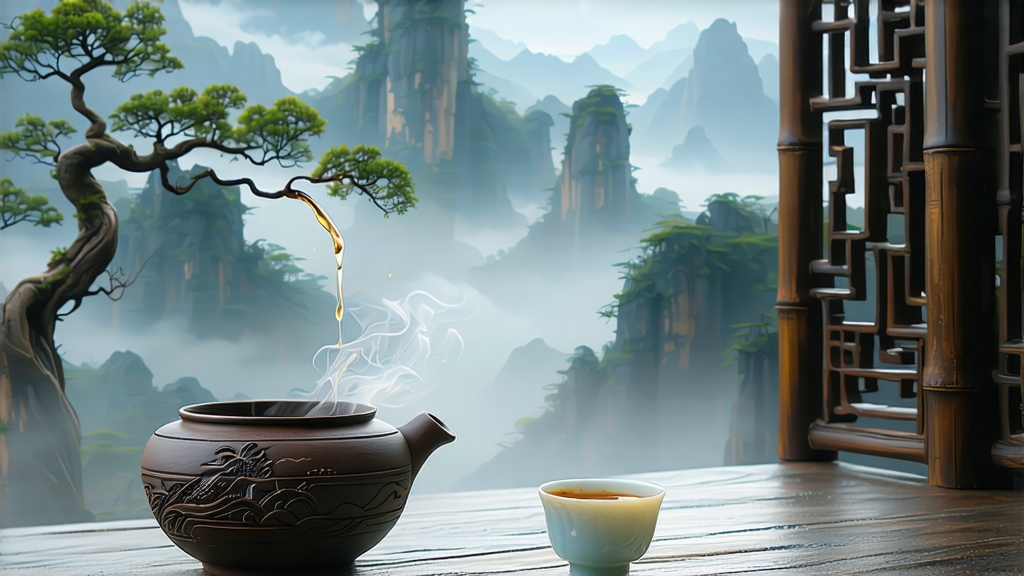
When most tea lovers outside China hear “oolong,” their minds leap to Tie Guan Yin or Da Hong Pao, yet farther south, tucked into the fog-veiled folds of Guangdong’s Phoenix Mountain, lives a family of oolongs so perfumed that locals call them “xiang” or “aroma” teas. Among them, Phoenix Dancong—literally “single-bush”—stands as the most kaleidoscopic expression of what a semi-oxidized leaf can become. One bush, one name, one unmistakable bouquet: honeyed orchid, ripe mango, toasted almond, or even fresh ginger, depending on the cliff garden from which it was plucked. This article invites you to travel that mountain path, to meet the cultivars, the craftsmen, and the quiet gongfu ritual that turns a leaf into liquid music.
Historical roots
Phoenix Mountain’s tea chronicle begins during the Song dynasty, when imperial refugees fleeing north-eastern unrest carried tea seeds to Chaozhou prefecture. Court literati had already developed a passion for “ tribute tea,” so the exiles selected the most aromatic wild trees on Wudong, Wuji, and Pinglin peaks, grafted them, and named each outstanding plant after the flower or fruit its aroma evoked. A 900-year-old mother tree, “Song Zhong,” still stands on Wudong at 1,100 m, a living monument to this era. By late Ming, Dancong had evolved from tribute to local ritual: Chaozhou gongfu cha, the most meticulous brewing etiquette in China, was designed expressly to flatter these fragile, fragrance-loaded leaves. Maritime trade in the eighteenth century carried Dancong to Southeast Asia, where Teochew migrants opened shops that still sell “Feng Huang” (Phoenix) branded teas to diaspora communities today.
Terroir and cultivar mosaic
Phoenix range is a granite spine punched through by subtropical mist; diurnal swings of 10 °C between noon and night coax slow growth and condense aromatics. Over centuries, seeds dispersed by birds created a genetic rainbow: more than 80 aromatic profiles have been catalogued by the local tea bureau. Farmers classify them into three tiers. “Fragrance types” (xiang xing) mimic flowers or fruits—Orchid, Almond, Ginger Flower, Honey-Orange. “Leaf-shape types” (ye xing) refer to morphology—Big dark leaf, Whorl leaf, Upright leaf. Finally, “location types” (shan xing) tie flavor to elevation: Wudong above 800 m yields the most mineral, cooling aftertaste, while lower foothills give softer, sweeter cups. True Dancong is always picked from individual old bushes or cloned gardens traced to a single mother; bulk plantation tea is sold simply as “Feng Huang oolong,” a lesser grade.
From leaf to tea: the craft itinerary
Harvest comes in late April, when two leaves and a bud still curl like a sparrow’s tongue. Pickers start at dawn to keep the dew, finishing before ten to avoid mountain sun that might “burn” the green. After a short outdoor withering, the leaves are carried to the village alley where bamboo trays line every windowsill. Indoors, they undergo six to eight rounds of shaking-qing, the bruising ritual that sets Dancong’s signature oxidation between 30 % and 40 %. Masters read the leaf’s edge: rust-red when ready, still green at the vein. Oxidation is arrested on a 200 °C wok for eight minutes, just long enough to lock in the floral top notes. Next comes rolling, breaking cell walls so oils migrate to the surface. The most Phoenix-specific step follows: charcoal finishing in a mud-brick brazier. Using only lychee or longan wood, the tea baker maintains 70 °C for six hours, rests the leaf overnight, then repeats the cycle up to three times over a month. This gentle heat refines tannins and layers a whisper of ember beneath the high aromatics, ensuring the tea will age gracefully for decades.
Tasting lexicon: how to listen to a Dancong
Professional cuppers in Chaozhou evaluate Dancong through three infusions only, believing the soul reveals itself quickly. First, aroma of the dry leaf: warm it in a pre-heated gaiwan, lift the lid, inhale—notes should be vivid, never muddy. Second, the liquor color: brilliant apricot with a platinum rim signals proper charcoal bake